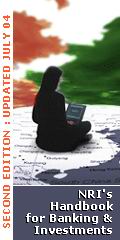|


|
India committed to integration with the global economy
-Shri P. Chidambaram,Finance Minister
Following is the text (page 3) of Keynote address made by the Finance Ministry Shri P. Chidambaram at the India Europe Investment Forum in London on 27th June 2007
The gradualist approach to reforms is also likely to continue in the realm of the capital account of the balance of payments. As a result of policy measures undertaken since the early 1990s, India’s trade and financial integration with the global economy has grown over time. India’s trade openness is already higher than in some of the advanced economies, including the US. In tandem with trade openness, India’s capital account has witnessed a structural transformation since the early 1990s. There has been a dramatic shift in the composition from official flows to market-oriented private sector flows. After independence in 1947, during the first three decades, trade balance was financed mainly by official flows in the capital account. During the 1980s, the dependence on official flows moderated sharply with private debt flows in the form of external commercial borrowing and non-resident Indian (NRI) deposits emerging as the key components of the capital account. Following the shift in emphasis from debt to non-debt flows in the reform period, foreign investment comprising direct investment and portfolio flows has emerged as the predominant component of the capital account.
The international linkage of India’s stock market has been enhanced with listing of Indian companies in some of major stock exchanges. In the US NASDAQ, 12 major Indian companies are listed. These companies account for about 20 per cent weight in the Sensex, the benchmark index of the Bombay Stock Exchange. 50 companies including eight major companies in the BSE Sensex are listed on the London Stock Exchange. Empirical evidence suggests that movements in the BSE Sensex are positively correlated with the indices in the US and the UK. The stock markets in India have become modern and are comparable to the best in the world in terms of market infrastructure, trading and settlement practices and risk management systems.
While remaining committed to integration with the global economy, India has followed a gradualist approach to opening up to capital flows. It differentiates among various players. The rupee is fully convertible on the current account. Besides, a number of transactions on the capital account are also freely permitted. There is de facto full capital account convertibility for non-residents: they can bring in their money and they can take out their money. Foreign direct investors can bring in capital and take out their royalties, profits, dividends and capital including capital gains. Foreign institutional investors can invest in the capital market and take out dividends and profits. Resident Indians can bring in money subject to certain restrictions on debt capital. The earlier restrictive Foreign Exchange Regulation Act (FERA), 1973 has been replaced by the market-friendly Foreign Exchange Management Act, 1999. Considerable powers have been delegated by the Reserve Bank of India to Authorised Dealers to release foreign exchange for a variety of purposes. Resident Indians are now allowed to take out up to US$100,000 per year for capital account transactions.
Large inflows of capital can create pressures that lead to inflation, and/or appreciation of the exchange rate. With our policy of a flexible market-determined exchange rate, we have faced this problem in recent months. We have responded with an appropriate mix of policies in a calibrated fashion without imposing any unduly restrictive capital controls.
Alongside gradual liberalisation of the capital account, India has pursued fiscal consolidation with a determination that has surprised many at home and abroad. We have taken steps to contain inflation with appropriate fiscal and monetary policies. We have ensured that the current account deficit is maintained at a sustainable level. Our management of the external debt has been exemplary. We have kept short-term external debt under a limit and restricted such debt to financing imports.
Globalisation has become a two-way street even in terms of capital flows. Indian companies have begun to look for opportunities to invest abroad. Outward investment by Indian companies has taken both the organic and the inorganic routes. In recent months, Indian companies have acquired large and reputed businesses abroad, particularly in Europe and the U.S., in such diverse areas as steel, mining, engineering, automobiles, liquor, pharmaceuticals, hotels and software. What motivated such acquisitions is factors such as achieving global leadership in a specific product category, gaining access to markets, technology, natural resources and brand names, and scaling up operations.
The two-way interaction between India and the world in terms of globalisation is here to stay. We continue to harness the globalisation process to suit our requirements and attempt to convert the challenges into opportunities.
Ladies and Gentlemen! In what we say and in what we do, the paramount concern is the welfare of our people, especially farmers, agricultural labour, weavers, workers and weaker sections of society, and assuring a safe and viable livelihood for each family through rapid generation of employment. Sustained and viable employment, and providing our people with reasonable incomes, can be achieved only by revitalizing agriculture, augmenting and improving the infrastructure, sustaining high industrial growth and maintaining the growth momentum in services. The keystone of this ambitious plan is investment. There is no doubt in my mind that if we succeed in mobilising investment, both within the country and from abroad, we will succeed in keeping the India growth story going for many more years.
The India growth story is a real life story unfolding before our eyes. For Indians, it is a huge challenge. For Europe, it is a huge opportunity. For the world as a whole, it is an exciting prospect that India will finally succeed in eliminating poverty and joining the ranks of the developed countries of the world. When, I repeat when, not if, India succeeds, no one will be a loser and all us will be winners. I hope Europe will respond to the ‘India opportunity’ and more fully engage India in the months and years to come further.”
<< PAGE 1
CLICK FOR MORE FEATURES & STORIES
|
|


|